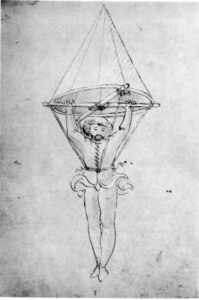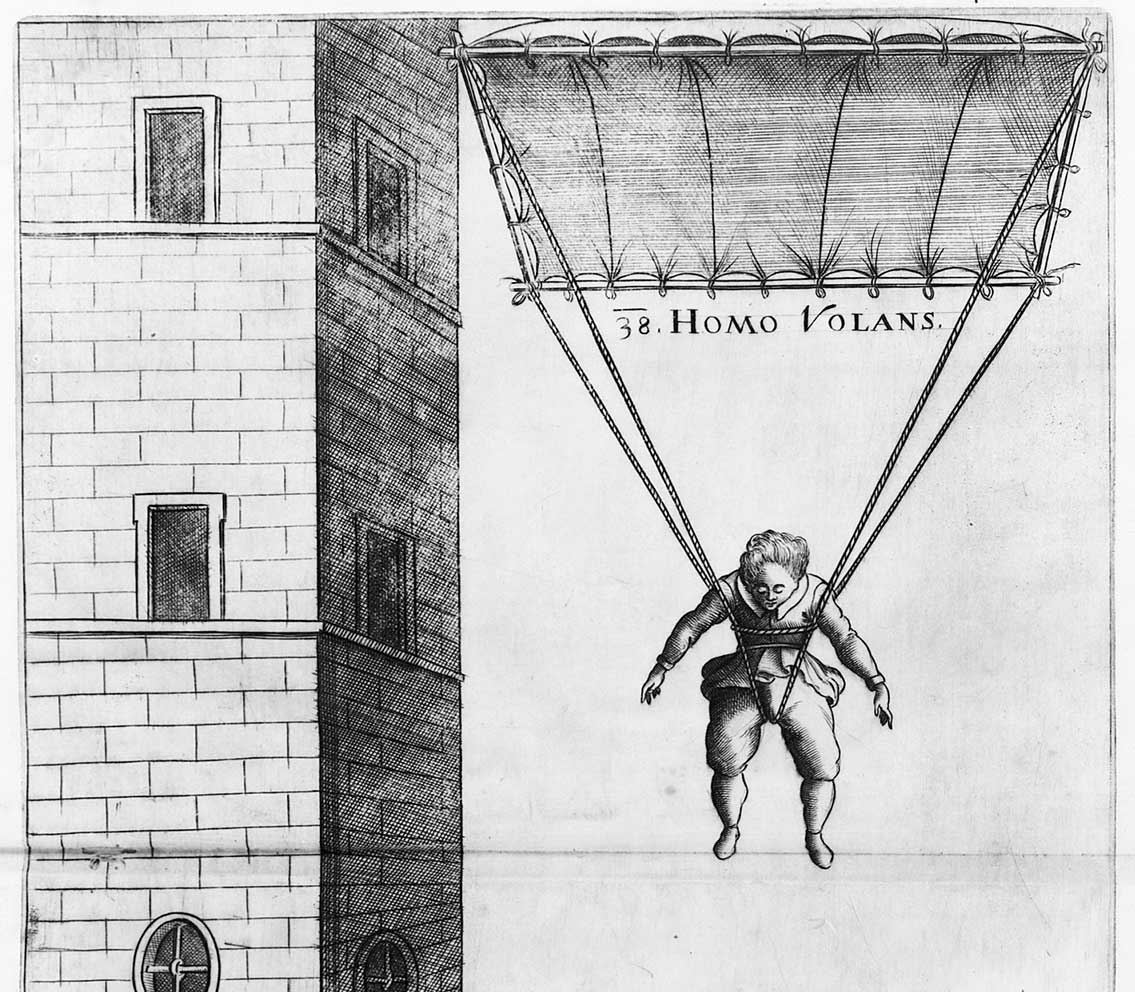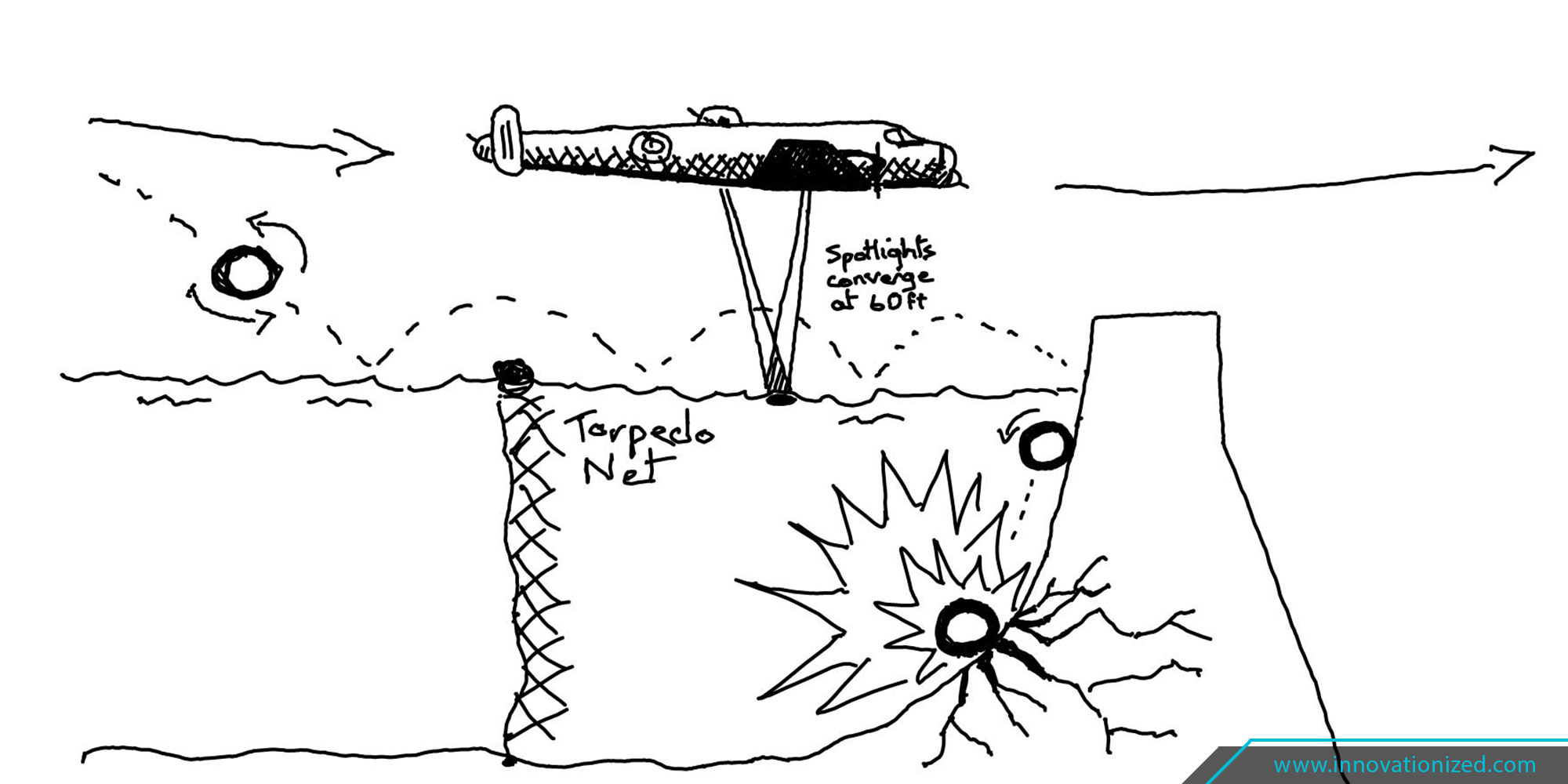The story of the parachute, actually goes back over 2,000 years.
The concept of the parachute is usually attributed to Leonardo da Vinci in the 15th century. But surprisingly, the earliest mention of a parachute (or a parachute-like device) is much older.
The earliest mention of the concept, goes as far back as the writings of the Chinese scholar, Ssu-ma Ch’ien (born 145 BC). In his writings on history he tells the tale of a Chinese emperor who survived jumping from the top of a burning building, by clutching conical straw hats.
A much later mention of the principle in use, as opposed to a purposefully designed equipment, is in a 13th-century manuscript, also from China. It tells of a thief who made a daring getaway, leaping from a high tower holding two parasols.
True or false, these stories suggest that the principle behind the parachute was understood, long before the first parachute was invented and used.
The Horizontal “Parachute” in 3,000 BCE
While at first surprising, these early mentions of the concept of a parachute make sense, because we have another innovation, somewhat similar to the parachute, that has been around even longer. You can think of it as a horizontal parachute.
The sail.
The sail has been around since at least 3,000 BCE, and some sources say since 4,000 BCE. No doubt, many ships were not only propelled to their destination, but were also delivered to undesirable destinations when they were blown off course, or struggled under sail, or with oar-power, against headwinds.
This illustrates the principle of wind resistance, and that the area of a body affects its motion through air. The idea of a parachute, using a large area of fabric to slow a falling body, is not a big conceptual leap from a sail, where moving wind catches the sail and drags a boat along. They are really just two aspects of the same principle of wind resistance. In the one the body is falling vertically through stationary air, and is slowed by the “sail.” While in the other the air is moving horizontally and the sail (and sail boat) is dragged along.
This is sheer speculation on my part, but it seems possible, that the principle of wind resistance exhibited in the sail, could have led to application of it in the parachute. No doubt, there were plenty of examples of falling flags, garments, handkerchiefs, hats, parasols, and other items that could have illustrated the principle to the thoughtful observer.
The Parachute Design
It was long believed that Leonardo da Vinci was the first to design and invent the parachute. That theory was overturned in 1968.

In that year, researchers discovered a drawing by Italian engineer, Mariano di Jacopo (known as Taccola), who was 70 years older than Leonardo. The drawing predates and yet is very similar to Leonardo’s.
But, even Taccola’s design may go back much earlier, to the 9th century. Taccola is known to have designed original machines and to have drawn copies of ancient designs. There is some evidence that Taccola’s design is a copy of a parachute design by Muslim inventor, Abbas Ibn Firnas. He is said to have leapt from the minaret of the Cordoba mosque in 852, and thanks to his pyramid-style parachute, suffered only minor injuries.
Another account of a specifically designed parachute in use, predating Leonardo, is again from China. There is a report of a parachute demonstration given during the coronation of an emperor in 1306. This story cannot be confirmed.
Then there is Leonardo da Vinci’s famous sketch of a pyramid-shaped parachute in one of his notebooks, which date between 1478 and 1518.
How good is da Vinci’s (Taccola’s, or Abbas Ibn Firnas’) design?
In 2000 AD a daring British man tested Leonardo da Vinci’s parachute design in South Africa. He built it of canvas and wood, exactly to da Vinci’s specifications. It weighed a concerning 185 lbs (84 kg)! He was carried by balloon up to 10,000 ft and released. da Vinci’s rigid parachute design worked, as he had predicted.
Fausto Veranzio, another Italian inventor, designed his “Homo Volans” (“Flying Man”) parachute in 1595. It was based on da Vinci’s design, but more modern, with a rectangular design.

The First Parachute Jumps
The first proven use of a parachute is much more recent. It was Louis-Sébastien Lenormand of France in 1783, who used two parasols to slow his descent from a tree.
Impressive as all these feats were, I think the award for deep conviction in physics and his design, must go to Andre-Jacques Garnerin.
In Paris, in 1797, Garnerin leapt from a balloon at a height of 3,000 ft (1 km), with only his parachute to save him. He survived.
He went on to do regular parachute exhibition jumps, including one from an incredible 8,000ft (2.4km) in England in 1802.
The first parachute jump from a plane was by Albert Berry in 1912, hanging from under a biplane.
Finally, a story of tragedy and incredible bravery, but one that I have been unable to verify, is reported by George W. Goddard (Brig. Gen. USAF Ret.) in Aerospace Historian, Spring 1966.
It is 1919, an English inventor, arrived in Dayton Ohio with his daughter, to demonstrate his parachute. Goddard flew the plane with the photographer, Louis Hagenmeyer, to capture the jump.
“The Englishman jumped, and in doing so, he slipped and the parachute harness was ripped off his body when it caught on a control projection on the side of the airplane. His daughter watched her father fall to his death, but she was so intent on proving the trustworthiness of the parachute, that withing a couple of hours, she donned the chute and made a successful demonstration jump.”
We’ll never know exactly how many lives this equipment has saved, but it is estimated that it had already saved 200,000 lives by the end of World War 2. Of course, the parachute is even more popular today. It’s use has grown far a safety device for pilots, and is used by recreational skydivers, base jumpers, and wing suiters.
References
Britannica, T. Editors of Encyclopaedia. “Leonardo da Vinci’s parachute.” Encyclopedia Britannica. Accessed September 3, 2022: https://www.britannica.com/topic/Leonardo-da-Vincis-parachute-1704849.
Ufuk Necat Tasci, “Abbas Ibn Firnas: The first human to fly,” TRT World, May 26, 2020, https://www.trtworld.com/magazine/abbas-ibn-firnas-the-first-human-to-fly-36655
Fausto Veranizio, “Homo Volans,” 1595, in Library of Congress, accessed, September 10, 2022, https://www.loc.gov/pictures/item/2006690488/
Britannica, The Editors of Encyclopaedia. “parachute”. Encyclopedia Britannica, accessed August 20, 2022, https://www.britannica.com/technology/parachute.
Dr. Damien Carrington, “Da Vinci’s Parachute Flies,” BBC News, June 27, 2000, http://news.bbc.co.uk/2/hi/science/nature/808246.stm
The story of the inventor’s daughter is recounted in Harold Warp’s A History of Man’s Progress, (Pioneer Village, Nebraska, date unknown). It references the report to George W. Goddard, Brig. Gen. USAF retired, which originally appeared in Aerospace Historian, Spring, 1966. I could find no other references to this story.





